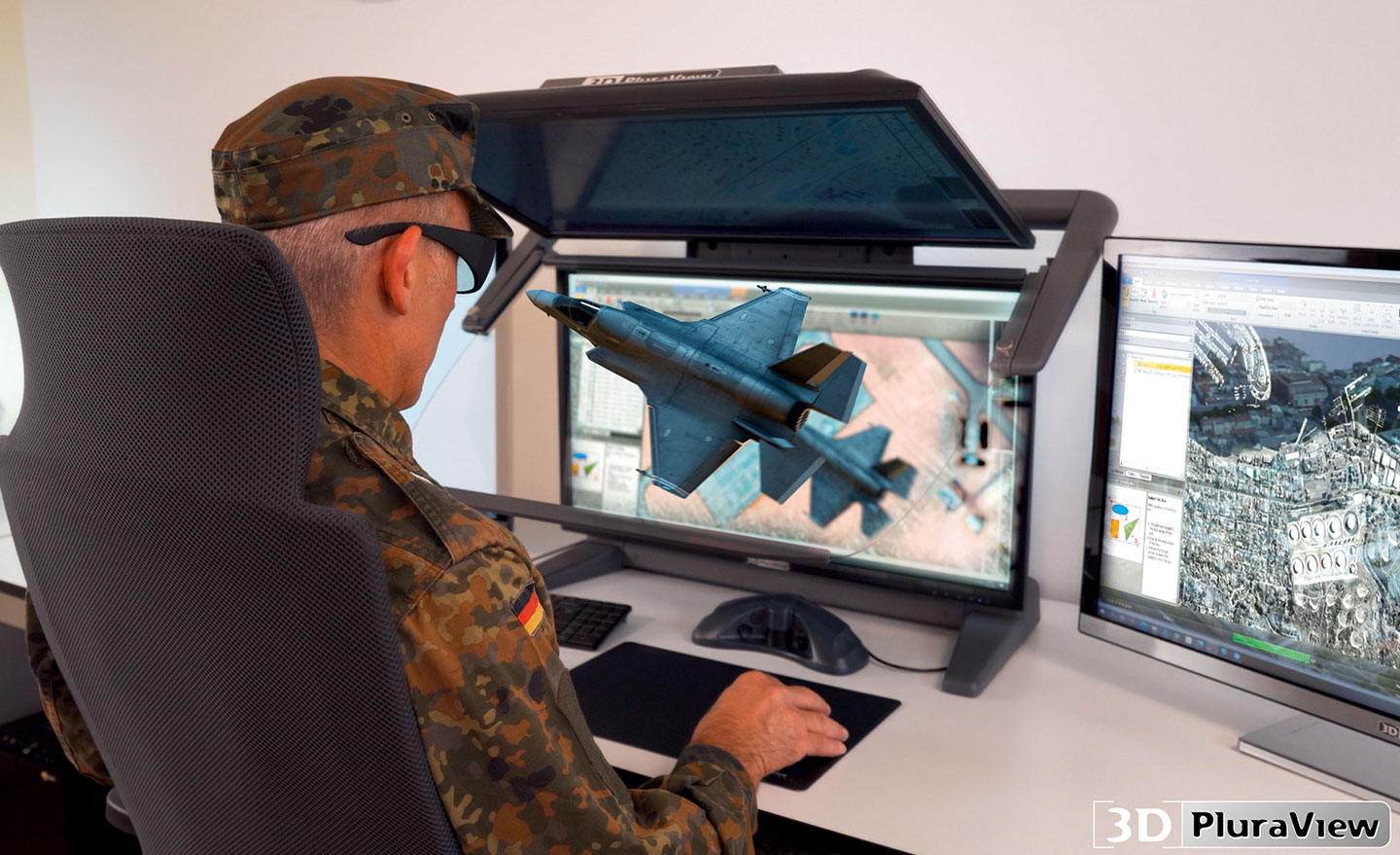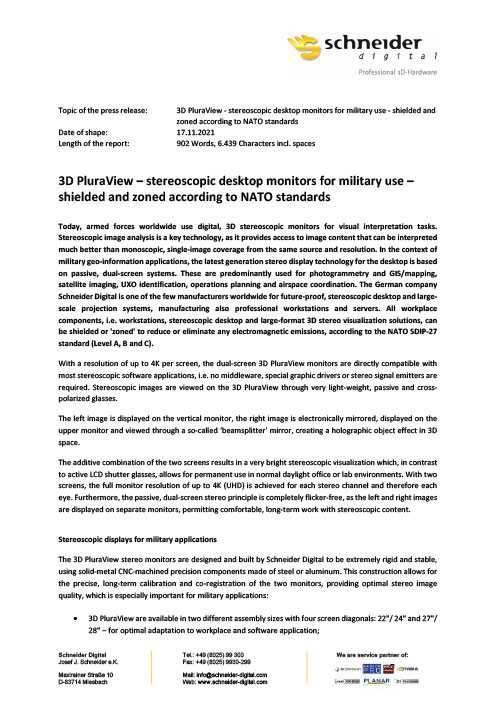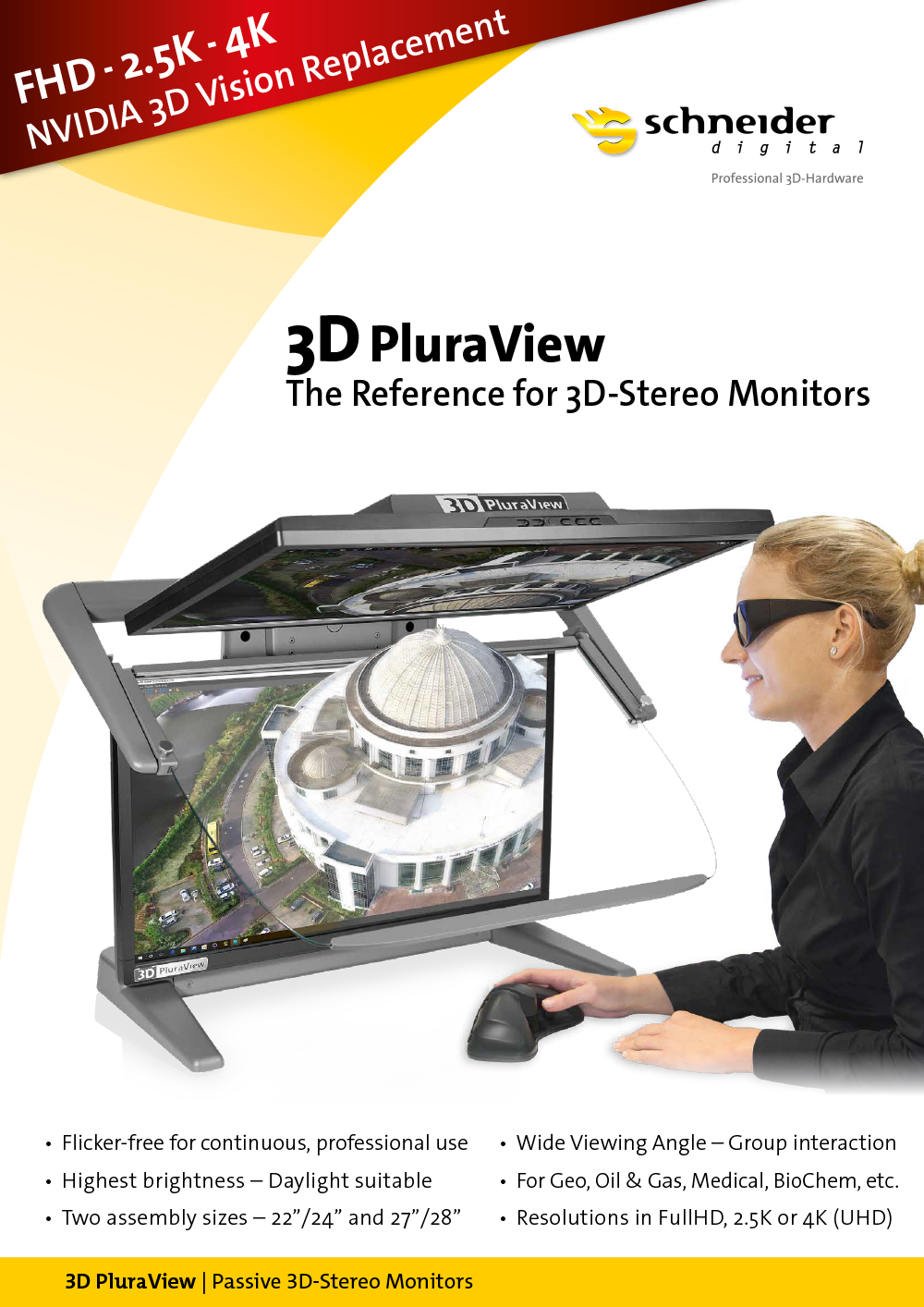Stereoscopic desktop monitors for military use: Now shielded and zoned according to NATO standards

Complete 3D stereo workstation solutions according to NATO SDIP-27 standard (Level A, B and C) for military geo-information applications
Today, armed forces worldwide use stereoscopic monitors 3D PluraView for visual interpretation tasks. Stereoscopic image analysis is a key technology, as it provides access to image content that can be interpreted much better than monoscopic, single-image coverage from the same source and resolution. In the context of military geo-information applications, the latest generation stereo display technology for the desktop is based on passive, dual-screen systems. These are predominantly used for photogrammetry and GIS/mapping, satellite imaging, UXO identification, operations planning and airspace coordination.
The German maunfacturer Schneider Digital is one of the few manufacturers worldwide for future-proof, stereoscopic desktop and large-scale projection systems, manufacturing also professional workstations and servers. All workplace components, i.e. workstations, stereoscopic desktop and large-format 3D stereo visualization solutions, can be shielded or ‘zoned’ to reduce or eliminate any electromagnetic emissions, according to the NATO SDIP-27 standard (Level A, B and C).
With a resolution of up to 4K per screen, the dual-screen 3D PluraView monitors are directly compatible with most stereoscopic software applications, i.e. no middleware, special graphic drivers or stereo signal emitters are required. Stereoscopic images are viewed on the 3D PluraView through very light-weight, passive and cross-polarized glasses.
The left image is displayed on the vertical monitor, the right image is electronically mirrored, displayed on the upper monitor and viewed through a so-called ‘beamsplitter’ mirror, creating a holographic object effect in 3D space.
The additive combination of the two screens results in a very bright stereoscopic visualization which, in contrast to active LCD shutter glasses, allows for permanent use in normal daylight office or lab environments. With two screens, the full monitor resolution of up to 4K (UHD) is achieved for each stereo channel and therefore each eye. Furthermore, the passive, dual-screen stereo principle is completely flicker-free, as the left and right images are displayed on separate monitors, permitting comfortable, long-term work with stereoscopic content.
3D PluraView supported applications:
Contact us: [email protected]

